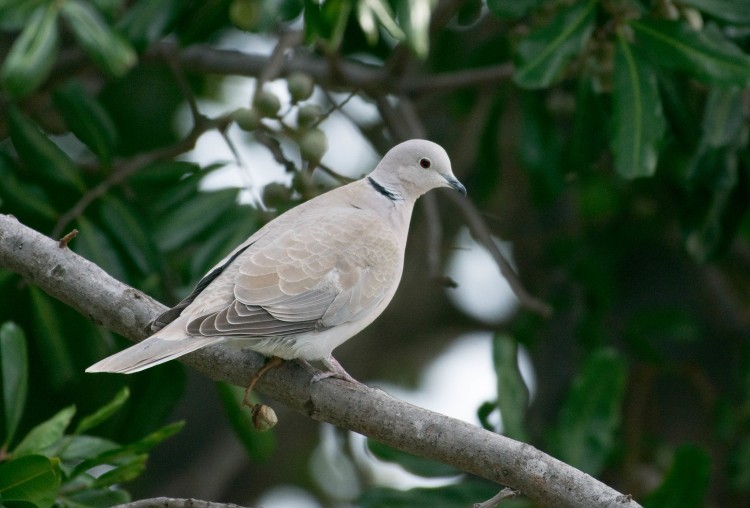The Remarkable Range of the Eurasian Collared Dove: A Global Traveller

The Eurasian Collared Dove (Streptopelia decaocto) exemplifies adaptability and expansion. Originally native to parts of Asia, this species has undergone a remarkable range expansion over the last century, making it a familiar sight across much of Europe, the Middle East, and North America. This dove’s ability to thrive in a wide range of habitats has facilitated its success in colonizing new areas, making its range one of the most expansive among dove species.
The Eurasian Collared Dove's journey began in the Indian subcontinent, from where it spread across to the Balkans in the early 20th century. Its colonization of Europe was rapid and widespread, occurring mainly during the latter half of the 20th century. By the 1950s and 1960s, the dove had established itself in the United Kingdom and many parts of Northern Europe.
The Eurasian Collared Dove's appearance in North America is a more recent phenomenon, first noted in the 1980s. It is believed that the species arrived in the Bahamas in the 1970s, possibly from accidental or deliberate releases. From there, it spread to Florida and subsequently across much of the United States and parts of Canada. Its proliferation across the continent has been swift, showcasing the bird’s remarkable ability to adapt to new environments.
One of the key factors behind the Eurasian Collared Dove's successful range expansion is its versatility in habitat preference. This species can thrive in a variety of settings, from rural farmlands and open country to suburban and urban areas. It is often found around human habitation, taking advantage of feeding opportunities in gardens, parks, and yards. This adaptability has been crucial in allowing the dove to integrate into existing ecosystems without the need for specialized habitat requirements.

Today, the Eurasian Collared Dove's range covers a vast area, including:
- Much of Europe, extending into Scandinavia and eastward into Russia.
- The Middle East, encompassing countries such as Turkey and Iran.
- Parts of Asia, particularly the Indian subcontinent where it is native.
- A significant portion of North America, from the southern regions of Canada through the United States and into Mexico.
Despite its widespread presence, the Eurasian Collared Dove continues to expand its range, especially in North America, where its population numbers are still growing. Its success story highlights the impact of species adaptability on range expansion, as well as the unintended consequences of human activities on wildlife distribution.
The Eurasian Collared Dove serves as an interesting case study in rapid range expansion and adaptability. Its presence across diverse geographical locations underscores the dynamic nature of avian distribution patterns and the continuous evolution of ecosystems under the influence of both natural and anthropogenic factors.













Comments
Leave a comment
Thank you!